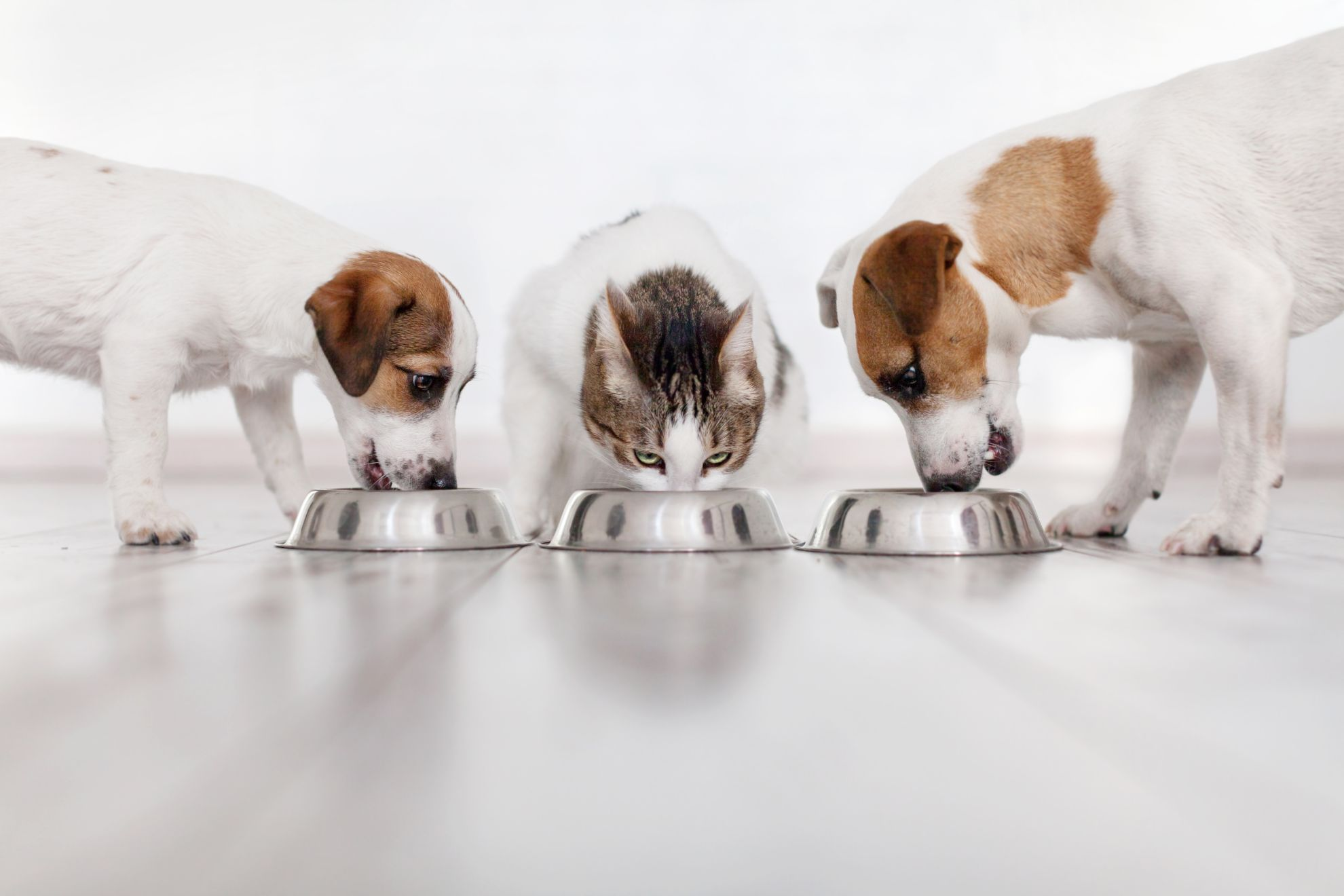Is my pet’s diet too greasy? 4 myths about the use of oil and fats in pet diets.
Article

When it comes to selecting a healthy pet diet, pet owners usually prefer the low-fat ones or the ones that look not-so-greasy to avoid their pets from gaining weight by taking in too much fats. In fact, fat has a special role in enhancing animal’s health, and is one of the essential nutrients for cats and dogs to maintain normal body functions.
But why are fats added to pet diets? In general, since not all kinds of fat (fatty acid) can be produced by cats and dogs’ own bodies, they will need to obtain certain nutrients from food to achieve a balanced diet. Also, fats can add flavour and improve palatability to the diet, good for increasing your pet’s appetite.
Many pet owners are not sure if it is true that diets with dry surfaces are a better choice? And those that look oily are regarded as unhealthy? Vet Dr. Tsai, the director of Hido Animal Hospital, is going to clarify the myths of oil and fats in pet diets:
Greasy looking kibble means that it carries high fat? Always refer to the nutrition facts table.
Some pet owners wonder why Royal Canin’s diets look greasier than other brands, and sometimes they even feel oily. At Royal Canin, the very last step of the manufacturing process is to spray a layer of fish oil around the kibble.This is to prevent the nutrition value of the unsaturated fatty acid being destroyed by high temperature in the oven.
Besides, the weather in the subtropical area also affects how the diet would feel like. When the temperature around the storage area is high, the oil on the surface layer would melt, leading to an oily surface.[1] However, this phenomenon is seasonal. If we store the diet in a dry place and avoid direct sunlight, the above situation is not likely to happen.
To determine whether the diet is greasy or not, and whether it is suitable and safe for your pet to consume, the best thing to do is to check on the ingredient label, on the packaging. Always consult your vet to find out the right amount of nutrients your cats and dogs need.
The drier, the healthier? Be careful that the unhealthy oil may just be well-hidden!
After figuring out the reason for pet diets to have an oily surface, you may then ask: do kibbles with drier surfaces mean that they are healthier? This is definitely not true! If fat is not properly applied onto the diet during the manufacturing process, it is very likely to have the unfavourable fat hidden in the diet.
Actually, it is common to add fats to the diet during the manufacturing process. However, if the fats are overheated, their substance will transform and oxidize, causing the formation of free radicals that can endanger the health of cats and dogs. [2] Once the fats are heated and pressed repeatedly, they will also lose their nutrition value.
At Royal Canin, the kibble will be sprayed with a layer of fish oil in the very last process to prevent nutrient loss or spoilage under high temperature. Based on research and observation, we develop the best formula to meet the needs of all types of cats and dogs, ensuring the most suitable amount of fats that can be added to the diet. All these little details are essential to bringing true health to every dog and cat.

What kind of oil is good for cats and dogs? Let’s hear what Vet Dr. Tsai says.
To maintain good health, it is important for cats and dogs to obtain various kinds of fats. Dogs can get Omega-3 and Omega-6 from fish oil and plant oil such as algae oil and borage oil. On the other hand, cats need a higher proportion of animal fat, which can be obtained from fish oil, meat or other poultry.
(1)Fish oil contains EPA, DHA and Omega-3, which helps to soothe arthritis problems and improve dog’s memory. Omega-3 is also a natural anti-inflammatory that can indirectly reduce pets' dependence on anti-inflammatory drugs.
(2)Algae oil contains a good amount of Omega-3, which is beneficial to the heart, arthritis problems and immunity. It has been widely adapted into pet foods as well as human foods.
(3)Borage oil is a natural fatty acid that carries high nutritional value. With an abundance of unsaturated fatty acids such as linoleic acid and linolenic acid, it is beneficial to the health of the heart, able to improve digestion, lower cholesterol level, and also enhance better skin conditions.

Check on the international accreditations for the recommended amount of fats in your pet’s diet
To check whether the diet is a qualified one, you can directly refer to the packaging where usually all the accreditations are listed. You will know if the diet is certified by ISO, GMP+ and HACCP, or reached the international standards for food products, such as AAFCO and FEDIAF, etc.
AAFCO stands for Association of American Feed Control Official. It is a non-profit organization launched by a group of industry experts 110 years ago. They established a series of food standards including ingredient definitions and label standards for pet foods. Although it is not under the management of the US government, AAFCO has been a great support to states and federal when they create regulations and laws about animal feeds and pet foods.[3]
According to the label standards of AAFCO, manufacturers should label these items on the package clearly: product name, what species the food is for, quantity statement, ingredient statement, nutritional adequacy statement (including complete and balanced), feeding directions, name and address of the manufacturer or distributor. [4]
While AAFCO established all these guidelines and definitions, they do not directly test, approve, or certify pet foods to make sure that they meet the standard requirements. Pet food companies usually hire third-party testing agencies to analyze their foods according to the AAFCO guidelines.
Royal Canin has developed over 200 different formulas, including wet and dry products for both cats and dogs. We respect nutritional standards globally, and most of our products have been validated under the AAFCO and FEDIAF (European Pet Food Industry Federation) standards, as well as the nutritional requirements set by National Research Council (NRC), to ensure the health and wellbeing of cats and dogs.
The look and feel of the pet diet do not necessarily represent their nutrition value. The above explanations about the use of oil and fats in pet diets suggest how pet owners should choose a right, safe and healthy diet.

About Vet Dr. Tsai
- Profession: General practice for cat and dog, soft tissue surgica
- Occupation: Veterinarian in Chief, Nicolas Animal Hospital / Director, Hido Animal Hospital
- Qualification: National Chiayi University
Resources:
[1] https://www.facebook.com/RoyalCaninTW/photos/a.278978032663893/417551398806555/?type=3
[2] Matthaus and Ozcan (2012). Free radical scavenging activity and oxidative stability of some vegetable oils. J Food Lipids, 19(1), 1-14.
[3] https://www.aafco.org/
[4] https://www.petmd.com/dog/nutrition/What-Is-AAFCO-and-What-Does-It-Do
Related Articles
Like & share this page